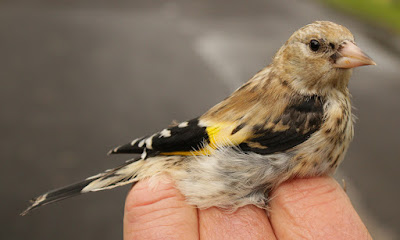One of these days I will get around to a blog post about Sue & I and our 14 days in sunny Skiathos, our second home.
How we survived the aftermath of horrific storm Daniel and the accompanying floods that almost destroyed yet another Skiathos season. How the stoical, independent-minded, enterprising and hard working Skiathans returned their island to almost normal in less than a week while welcoming travellers to their magical island as if nothing had happened.
How we felt humbled and amazed that in the face of more disasters, their spirit, generosity and welcoming nature never faded a jot.
For now it’s another ringing morning, this time on Monday at 0700 with Will, Andy and Bryan (not forgetting Barney) at our Oakenclough site on the edge of the Pennines above the market town of Garstang.
The rather gloomy start did not faze us because over to the north just 12 miles away over Morecambe Bay the sky promised a bright, even slightly sunny morning that would part any clouds and propel birds through to our waiting nets. We were not disappointed when very quickly began an almost constant flow of migrant birds from the north; above and at eye level, heading south and west, hirundines, finches, wagtails, pipits, larks and even geese.
Periods of processing and ringing birds by all four led inevitably to an incomplete and somewhat scratchy estimate of the species moving through and passing overhead – 220 Pink-footed Geese, 200+ Meadow Pipits, 60 + Swallows, 35 Siskins, 50 Chaffinches, 10 Lesser Redpolls, 60 Goldfinches, 15 Skylark, 20 wagtails, 35 Long-tailed Tits, 1 Reed Bunting, 1 Sparrowhawk. And goodness only knows how many there really were!
Meanwhile a single Blackbird and no other thrushes felt rather strange amongst the rush and totals of species and numbers on the move - food for thought. In the meantime Redwings, Fieldfares and Northern Blackbirds will be with us very soon on their trajectory to warmer climes.
Birds ringed 0730 to 1130 – 53 of 12 species – 14 Goldfinch, 9 Chaffinch, 6 Meadow Pipit, 6 Lesser Redpoll, 4 Coal Tit, 3 Long-tailed Tit, 3 Great Tit, 2 Blue Tit, 2 Robin, 2 Bullfinch, 1 Treecreeper, 1 Goldcrest.
Bullfinch
Lesser Redpoll - indeterminate sex first autumn
Treecreeper - first autumn
Meadow Pipit - first autumn
Siskin - first autumn male
Meadow Pipit- adult autumn
Meadow Pipit - adult autumn
Food for thought. In between the worry and expense of clearing up after Storm Daniel, and while caring for quests, our hosts Makis and Litsa of Hotel Ostria came to us in the garden one day with a freshly made Cheese Pie. Filo pastry with goat’s cheese filling, the pastry then glazed over with Greek Honey. Home made, simple yet divine.
Skiathos Cheese Pie
"Philoxenia" - φῐλοξενῐ́ᾱ meaning "friend to a stranger” is about much more than a warm welcome; it is a complex moral code with deep roots in Greek culture and Greek daily life.
Meanwhile in Western Europe and seemingly also in the US, led by media, big business and government there is an epidemic of cultural dementia coupled with a desire to obliterate our history and values. The Greek people don’t fall for such nonsense. and remain true to their beliefs.
Back soon folks with more tales, news, views and photos on Another Bird Blog. Stay safe, stay sane, stay strong.
Linking today to Eileen's Saturday.
















































































